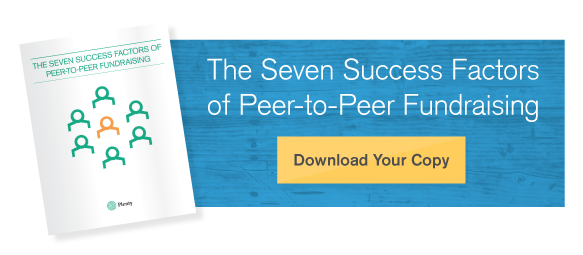Several weeks ago we started our exploration of the Seven Success Factors with a brief examination of strategy. We discussed the idea that strategy starts with focus: setting one over-riding priority and being willing to make trade-offs to make that priority successful.
Implicit in this idea of strategy is the second critical component of a successful peer-to-peer fundraising campaign: audience. As with strategy, the primary task in defining your audience is to focus your efforts. You may think that everyone should care about your work, but not everyone does – and even fewer still will fundraise for you. Large target “audiences” described in general terms like “women 25-54” aren’t really helpful. Women between the ages of 25-54 is an entire population! It is an audience that is far too big to be addressed, at least on a typical nonprofit budget.
Force yourself to define further. A good way to start is to ask yourself, who cares about our cause, and why? For example, which women aged 25 to 54 care about you? What do they do? Where do they congregate? An effective target audience is large enough to power your peer-to-peer campaign but small enough that it can be addressed with finite resources.
Another common mistake is to assume that your audience looks just like you. They might – but they might not. Make sure you validate your own intuition with the proper data tracking pieces in place to capture the important information fields: name, age, gender, contact information, address, and so forth. And don’t forget to ask, “Why is our work important to you?” Often we don’t know the most critical piece of information – namely, why our constituents got involved in the first place. It is amazing what you find out when you ask.
Finally, remember that your peer-to-peer audience might be somewhat (or significantly) different than your traditional donor constituency. Some, but not all, peer-to-peer constituencies we analyze skew younger than the overall database of record. We usually find other differences too – differences in political affiliation, history, education, and so forth. Take some time to understand who is working their peer groups on your behalf.
[Editor’s Note: Over the next few weeks, we’re looking in more detail at the Seven Success Factors, the evaluation framework we use to help our clients optimize their peer-to-peer fundraising campaigns. We use this framework to identify opportunities for growth as well as spot weaknesses or misalignments that are impeding performance.]
Download the complete Seven Success Factors E-Book today to learn more about evaluating and improving your peer-to-peer program!

No Comments Yet
Let us know what you think